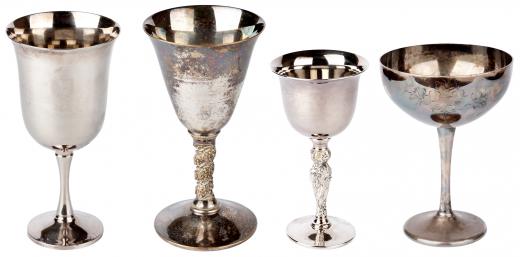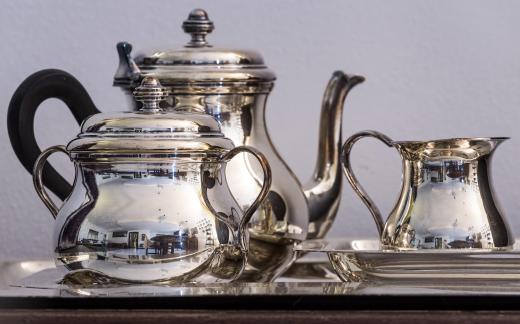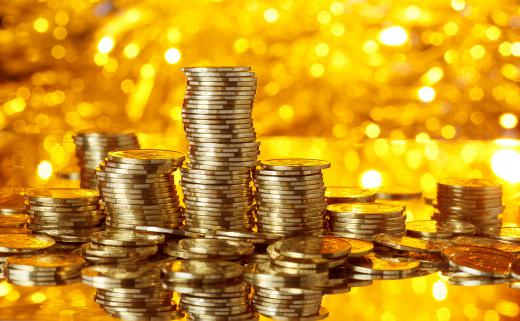What is Silver?
 Mary McMahon
Mary McMahon
Silver is a metallic chemical element with an atomic number of 47 and the symbol Ag. The “Ag,” incidentally, is from the Latin word argentum. This is probably one of the more well known chemical elements, since some people own jewelry or utensils made with it, and a number of cultures have traditional beliefs and myths about this metal. Silver also has industrial uses in addition to ornamental ones, and it is heavily mined around the world to meet global demand.
Humans have been aware of the existence of silver for thousands of years, and it has long been prized as a precious metal. Archaeological digs sometimes uncover artifacts made of this metal ranging from plated armor to elaborate jewelry. Silver is relatively ductile, although it is not as soft as gold, and it is relatively easy to work or alloy with other metals such as copper. In a pure form, it is a lustrous metal with high thermal and electric conductivity, although it tarnishes easily, so many objects turn greenish to black with age. However, when this tarnish is gently removed, the silver underneath will shine again.

In nature, silver is sometimes found occurring as a free metal, and it may also appear in deposits with other metals like copper and gold. Chemical treatment processes can help to refine these metals into pure forms for commercial use. It also appears in some minerals, and like other elements, silver combines to make a wide range of compounds, including silver nitrate, a salt with a number of uses from photography to antiseptics.

Silver and various salts of this metal are used in many industrial processes. The element itself is not toxic, but its salts are, and they should be handled with care. It is generally a good idea to wear eye protection and gloves when handling them, and people should avoid inhaling or consuming them. Metalsmithing with the metal can also be dangerous, due to the use of lead soldering agents and toxic fluxes to work it.

This metal has also historically been used in currency, because it is intrinsically valuable. Most nations have abandoned the use of precious metals in their currency, but special commemorative coins may be issued in silver and gold for collectors. Jewelry, of course, runs the gamut from mass produced sterling silver rings to ornate masterpieces of craftsmanship, and it can be found all over the world at a wide variety of prices.
AS FEATURED ON:
AS FEATURED ON:














Discussion Comments
For those of you with silver jewelry and silver utensils how do you find the upkeep on them?
I know silver wear and jewelry tend to tarnish with age and was wondering how often you need to clean silver, and whether it is difficult or not?
I vaguely remember my grandmother having a pair of silver salt and pepper shakers when I was small and I would have to help her polish them. At that time it seemed like a huge task and a lot of work. I wonder if it is really as hard to maintain silver's look as my memory makes it out to be.
With the economic issues in the United States and worldwide many people have turned to precious metals as a safe place to invest. Silver bars, as well as gold and platinum are considered for many safe bets because precious metals are the fall back currency in times of crisis.
If you are looking to invest in silver it is good to read up about quality and the quantity you would need to buy to have a good nest egg. Also looking a market trends will give you a good idea of how long it would take you to turn a profit.
Since 2010 the price of silver has risen more than 70%. This rise in value often happens when paper currency is struggling and volatile.
There are many legends about the supposedly magical properties of silver. While the most famous is probably the use of a silver bullet to kill a werewolf, other groups believe it can help ward off evil spirits, especially silver pendants shaped like crosses or other meaningful symbols.
There are also some traditions about silver, like iron as a way to block a person's magical powers, though other legends believe it can help to channel magic.
Post your comments